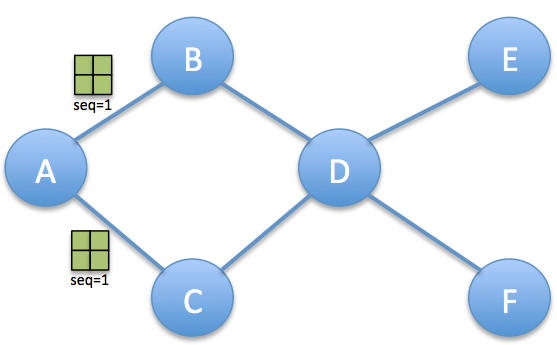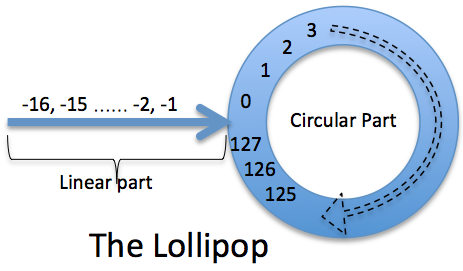Sequence numbers are used in network protocols to decide whether the received packet is a latest one or an old one. In case of protocols where there is no session which governs the scope of sequence numbers, it becomes especially difficult to decide whether the sequence number is latest or an old one. Let me explain what I mean by session here…
First lets consider the case of TCP protocol, where it has circular sequence number and the session initiator randomly initializes the sequence number and monotonically increments from then onwards. This is a very easy arrangement because the protocol works P2P i.e. the peers handshake and establish a session before starting the data movement and thus the scope of sequence number is managed within the session.
Now lets take an example of any adhoc routing protocol, where the routing state may be disemminated amongs multiple peers. There is no concept of a session since the messages flow any to any. If any node restarts/reboots, it has to ensure that the nodes around believe that the routing updates that it is sending after restart are fresh ones.
Consider the following topology where Node A starts disemminating its routing state to the network.

It uses seq=1 and in the future if it has a new state it can use seq=2 such that the peers will know that the new state is the latest state.
Now the bigger question here is if the Node A has to restart (or abruptly reboots) then what is the sequence number that it can use such that any new state that it disemminates is taken as a fresh information from the peers.
Lets say the Node A reinitializes the sequence number to 1, then other nodes would consider any new information from node A as stale information.
There are two easy solutions that comes to mind:
- Node A could backup the sequence number in persistent storage and on reboot, it can restore and increment the sequence number.
- Node A could timestamp the packets along with the sequence number or rather use timestamp itself as the sequence number.
Problem with approach 1 is the dependence on persistent storage. While it is an easy fix, persistent storage might not be available or its use might be costly. For e.g. consider an IoT use-case where the only persistent storage available is flash and writing to flash is considered costly since the writes to flash are limited in numbers before the flash sectors go bad.
Problem with approach 2 is that the time across all peers may not be synchronized.
Lollipop Counters
Using lollipop counters, the sequence numbers starts with a negative value and monotonically increments until it reaches zero and then cycles through the positive set alone.

Lollipop counter has two zones, namely the linear part and the circular part. The nodes starts in the linear part and moves into circular zone. Once it moves into the circular part then it stays in the circular part until the next reboot.
Lollipop counters allows:
- Peer nodes to detect whether the sender has rebooted
- Limited use of persistent storage (only in the linear part)
- the counter sizes to be smaller (because of its circular nature)
Implications on the use of persistent storage
Use of lollipop counters results in reduced use of flash/persistent storage.
The sequence number needs to be backed up in persistent storage only for the linear part.
If the node reboots while in circular part, then it restarts in the begining of the linear part thus the peers knows that the node has restarted and that the new packets will be the latest pkts.
Sequence Window and what value to use?
Sequence window defines:
- how long the counter remains in the linear part?
- in the circular region, if the absolute difference between the received seq number and the held seq number is greater than seq window, then the received seq number is considered to be new/fresh.
The sequence window should be large enough to accomodate the duration for which the packet might remain in transit in the network while new packets with updated sequence numbers are getting generated. In the above topology, Node A generates a packet with seq 1 and it is possible that while this packet is still in transit in the network Node A might generate subsequent update with seq 2. Now it is possible that Node F may receive the packet with seq 2 before seq 1. Node F should conclusively derive that seq 2 is the latest packet.
The sequence window could be kept large for larger multi-hop networks. If the propagation delay is high, then again it warrants to have a bigger sequence window. Note that the only implication of having a larger sequence window is that the linear part is correspondingly lengthier and thus requires more persistent storage writes.
Lollipop Counter implementation
Assuming that the sequence window is 16, and the sequence counter size is 1byte.
#define SEQ_WIN 16
#define LPOP_INIT -(SEQ_WIN)
#define LPOP_INCR(X) X=(X)<0?++(X):++(X)&0x7f;
#define LPOP_IS_GREATER(A, B) ((A)>(B) || ((B)-(A))>=SEQ_WIN)